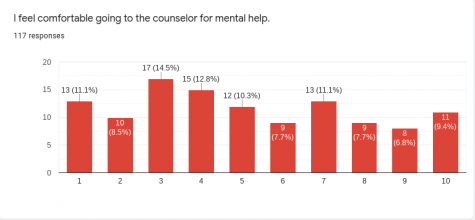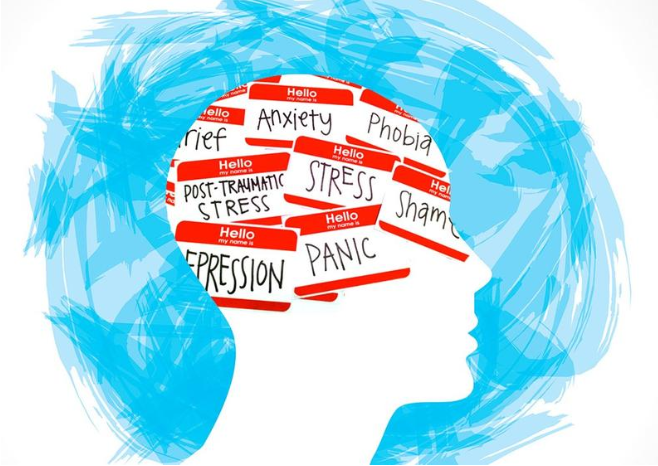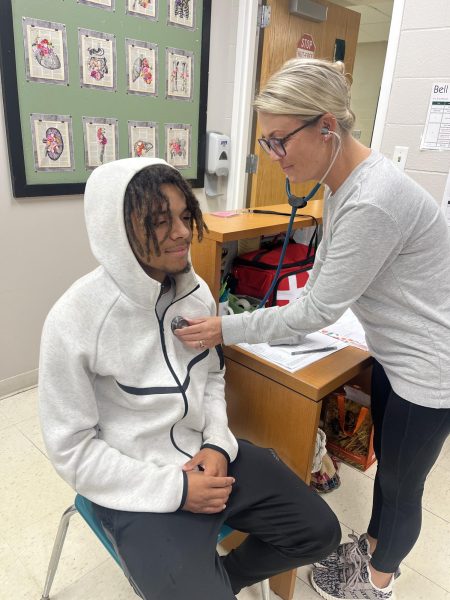Mental Illness in Teens Increased from Past Decade
Photo by Texas Public Radio
Teenagers suffer from a variety of mental illnesses, anxiety being the leading one.
Stress, anxiety and exhaustion. These traits have become normalized with high school students. These traits are also associated with mental illness. This shouldn’t be the case. Even though it is common, mental illness is still not talked about. Mental illness should not be a taboo topic; mental health should be taken as seriously as physical health. That starts with the community here at Mehlville.
Mental illness refers to a wide range of disorders that affect mood, thinking and behavior. They are most common in the United States with one in five adults suffering from some form of mental illness, according to the National Institute of Mental Health. Some examples are depression, anxiety, schizophrenia, eating disorders and bipolar disorder.
According to the Polaris Teen Center, mental illness impacts one in five teens from ages 12 to 18 and anxiety, specifically, impacts one in three teens. It is hard to believe there is such a stigma around mental illness and health, considering how many teens go through it.
Stigma associated with mental illness can be divided into two types; social stigma and self-perceived stigma. According to Psychology Today, social stigma involves the attitudes of others and their prejudice about mental illness. Self-stigma involves internalized thoughts about your mental illness which is influenced by stereotypes, discrimination and prejudices around them.
Media representation also plays a factor in the stigma people feel. Most people haven’t learned about mental illness in schools or haven’t done the research on their own. People only know what is shown to them through TV, movies and other media.
There are many stereotypes of people with mental illness that the media likes to portray. In an article from U.S. News, stereotypes of people with mental illness are criminal or violent, they look different than others and all illnesses are severe and not treated. These examples along with many others are preconceived beliefs that form from ignorance. The truth is, mental illness is more common than people think and it usually can’t be identified whether or not someone has a mental disorder just by looking at them.
Out of the people I surveyed, 71.8% of students know what their options for counseling are at Mehlville but 60.3% agree that the school doesn’t do enough for kids with mental illness. Clearly, something is missing here.
Teens need more than a slideshow presentation once a year about mental health. We need actual signs from teachers and staff that they care about our well being.
We need mental health days where we can take off to just get a break. We need places where we can go clear our heads for five minutes if we are having a rough day. We need teachers to recognize that we have seven classes to manage.
Teachers need to be lenient with us. If we are having a rough time, extend a due date. If we can’t focus on anything but what’s happening at home, let us take a test another day. Teachers are going to drive kids to the brink if they don’t recognize that we can’t handle it all on our own. Teens need a little help sometimes and that starts with admitting we have a problem and teachers realizing they can help.
The counseling center at Mehlville has resources to help students in need. The counselors are also teaching staff something called “Trauma Informed Practice (TIP).”
“That’s where you take into account the stresses and the trauma and the issues in student’s lives when you’re addressing discipline. For example, sometimes students act out in class because it’s not about me but maybe grandma had a heart attack last week or maybe they had a fight with mom that morning,” said Kathleen Tienes, English teacher.
Teachers are beginning to learn how to help students manage their stress by using the TIP method. Other things include phone and brain breaks as well as making classrooms safe spaces for students to tell their teachers what is going on.
“Maybe if they noticed something off with a student they can talk to them separately or shoot them an email. It doesn’t have to be face-to-face because some people don’t feel comfortable talking to somebody,” said Allison Mahfood, sophomore.
Even with the resources available, some students want to cope by themselves. Practicing healthy coping mechanisms is a way to manage stress. Being sure to eat healthy, get enough sleep and exercise. Along with talking to others when you’re upset, taking a break every once in a while and avoiding drugs and alcohol also benefit your body in coping with stress. In the end, if it’s still too much to handle, recognizing that you need help and seeking it from counselors or trusted adults is the best thing to do.
The counseling center should advertise the types of things they can help students with. A lot of students don’t go to the counselors’ office because they don’t know what to expect. Having flyers or talking to classes about the counseling center would bring awareness to it. They could even offer an online session if students feel more comfortable doing that.

On a scale from 1-10, 1 being not comfortable and 10 being extremely comfortable, some students indicated that they don’t feel comfortable going to the counseling center for help.
The counseling center is always available for students who need or want to talk to somebody. The National Suicide Prevention Lifeline is 1-800-273-8255. The National Sexual Assault Hotline is 1-800-656-4673. The Substance Abuse and Mental Health Services Hotline is 1-800-662-4357.

Samra Selimovic is starting her second year as a junior in journalism. She is interested in reporting her opinions on current events and writing features...








